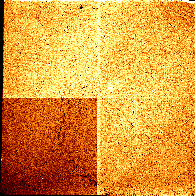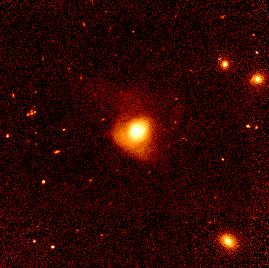A pipeline for IR imaging data at TNG
A new and very efficient pipeline is now available at TNG for the reduction of IR images taken with NICS. The system, called SNAP (acronym for Speedy Near-IR data Automatic reduction Pipeline) takes the raws NICS images of a mosaic(1) and, depending on the command options, can:
- Correct the frames for the cross talking effect.
- Determine their relative offsets.
- Define an "optimum sky", which does not include any of the objects detected in the final (combined) image.
- Correct the images for the distortion of the NICS optics.
- Subtract, flat and combine the frames into the final image(2).
Below is an example of how the pipeline, starting from a mosaic of twenty K' raw frames with 1min integration (left image), produces the final, combined image. The outstanding improvement in image quality is also related to the fact that IR-arrays have a quite irregular distribution of gain among neighboring pixels. This unaesthetic granularity disappears with sky subtraction and flatting.

|

|

|
More information on the procedure can be found on the SNAP user manual and on the SNAP web page.
On behalf of the whole astronomical community, we would like to thank Filippo Mannucci (IRA-CNR, Florence, Italy) for having developed and installed this system at the TNG.
Snap download. For any problem, please contact Filippo Mannucci(1) The mosaic could be either "ON-ON", i.e. dithering with relatively small offsets around the field center, or "ON-OFF", i.e. two separate groups of dithered images taken at quite different positions in the sky.
(2) Please keep in mind that the quality of final image could be hampered by the effect of persinstency, bias variation and instability of the first quadrant.

